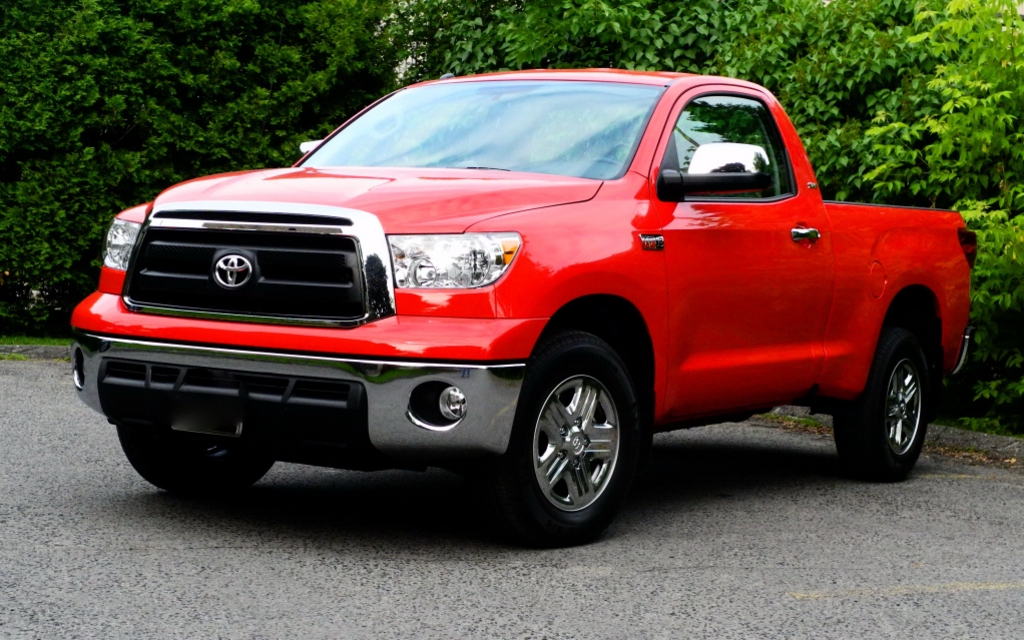2012 Toyota Tundra: Reasonable size and surprisingly fun to drive

I must admit that the Toyota Tundra pick-up never really excited me. Not to say that it isn’t a quality vehicle or that its engines lack power. Rather, I just didn’t like the fact that its designers made it bigger than the competition for the sole purpose of getting ahead of the game. Moreover, its chassis was not all that rigid. On the other hand, I couldn’t deny that the quality of the assembly, manufacturing and reliability lived up to the brand’s reputation.
Basically, let’s just say that I’ve always been lukewarm towards the Tundra, especially since it wasn’t particularly fun to drive. But test driving a very simple version changed my mind, at least partly. This Tundra was Radiant Red, a particularly loud colour in Toyota’s palette.
But there’s more to it than the bright colour. As soon as my foot touched the accelerator, I knew that I was going to enjoy my week-long test drive. But before we get into the ride, let’s get a sense of the mechanics and equipment.
Sturdy but simple
In the past, most Tundras offered to journalists by Toyota were luxury double cab models. Very comfortable, yes, but this bulky vehicle wasn’t extremely pleasant to drive. The test model for this article was a single cab, short bed version with a price tag of under $30,000 before taxes, preparations, delivery and options. Being less bulky also had positive repercussions on the ride. As for mechanics, the tried-and-true 5.7-litre V8 engine purring under the hood was paired with a six-speed automatic transmission linked to an all-wheel drive system controlled by buttons mounted on the dashboard.
To accentuate the model’s sporty nature, it has been equipped with the Appearance Package that includes 18-inch chrome rims, XM satellite radio, fabric-upholstered seats, chrome bumpers and rearview mirrors as well as several other accessories to improve presentation and comfort.
Single cab + big V8 = performance
I’m convinced that people interested in this pick-up will really like the sensations and accelerations. Like any vehicle in this category, the Tundra can transport large items or tow a trailer of nearly 4,000 kg (8,800 pounds). However, what impressed me was how quickly the engine responds when you tap the accelerator. I got quite the surprise when I pushed gently on the gas and the Tundra literally leapt forward. It was smooth sailing from then on. What’s more, its more reasonable size and lighter weight also influenced its handling, now slightly improved. It’s no sports car, but the interaction between the driver and the road is better than with other Tundras that I’ve driven in the past.
This model isn’t designed for big construction jobs or family vacations. Instead, the Tundra single cab 4X4 targets mainly people who like to drive, who sometimes need a pick-up and who aren’t interested in extended cab versions. The 0-100 km/hr time of less than seven seconds would be less important to these people than its towing capacity. Moreover, its fuel consumption remains very steep, as evidenced by my average of 16.5 L/100 km, despite the fact that I was driving very green.
This sportier version stands out in the Tundra line-up. It should interest drivers who aren’t fond of huge vehicles and who still like an inspired ride.









